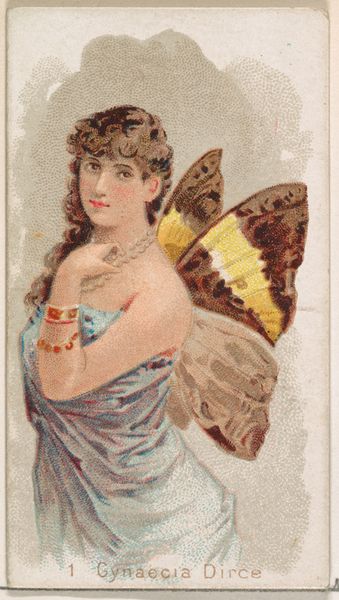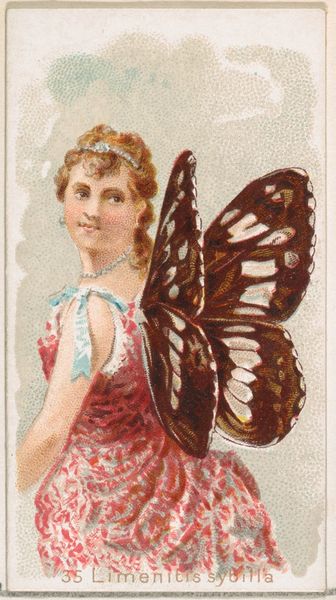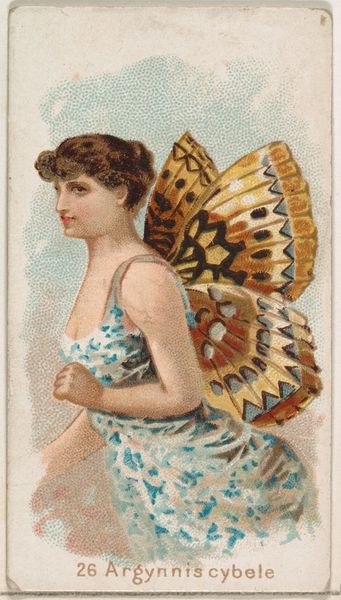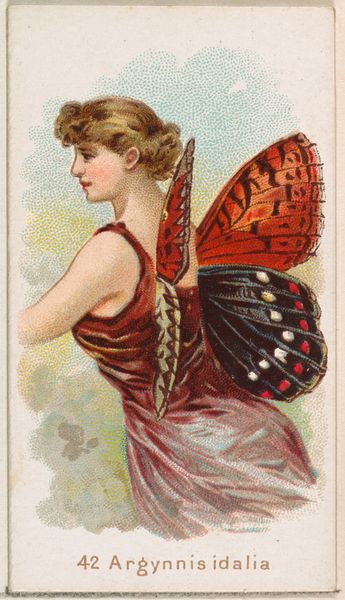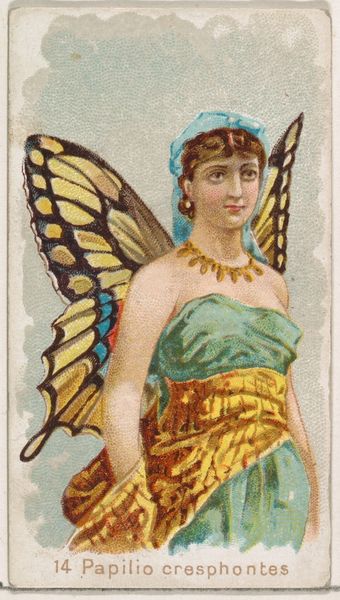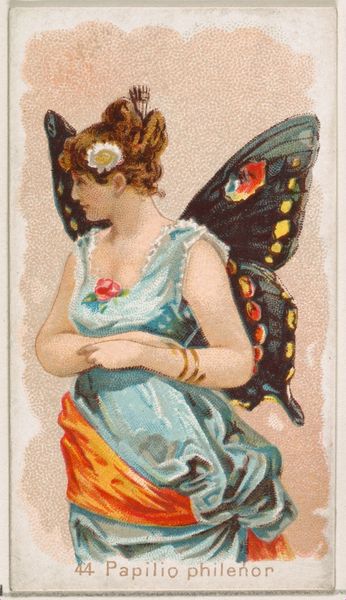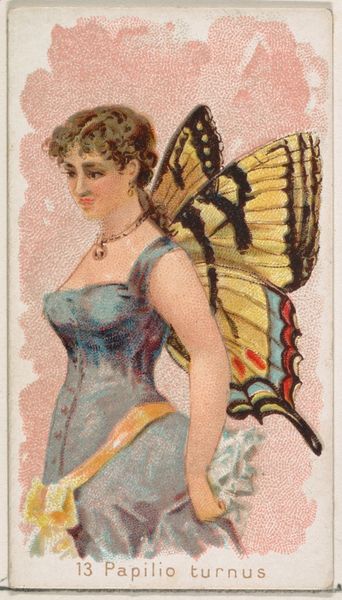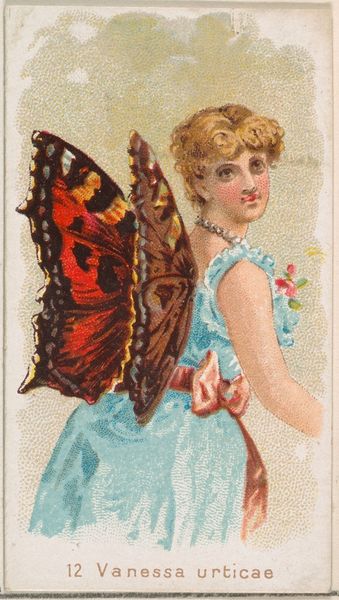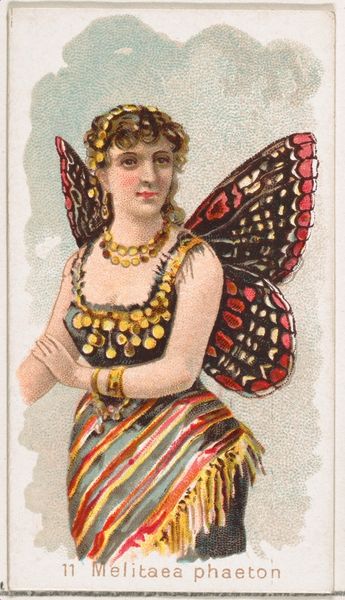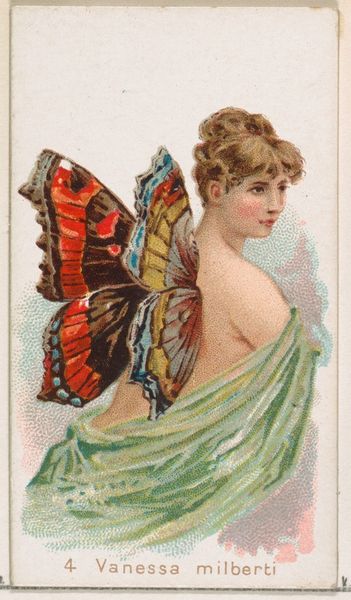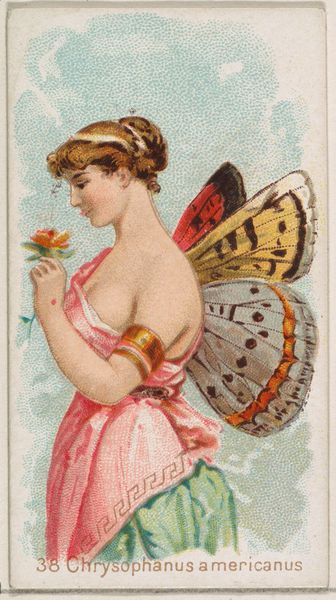
Card 18, Papilio Machaon, from the Butterflies series (N183) issued by Wm. S. Kimball & Co. 1888
0:00
0:00
#
portrait
# print
#
animal portrait
#
watercolour illustration
Dimensions: Sheet: 2 11/16 × 1 1/2 in. (6.9 × 3.8 cm)
Copyright: Public Domain
Editor: Here we have *Card 18, Papilio Machaon* from the *Butterflies series* made by Wm. S. Kimball & Co. in 1888. It's a lovely print, quite whimsical. What's striking to me is how the butterfly wings seem so naturally placed on the woman. How do you interpret this work? Curator: Well, on one level, it’s easy to see the influence of Japonisme here, particularly in the flattening of the image and the emphasis on decorative design, placing aesthetics as paramount. But let’s dig a bit deeper into the socio-cultural context. These cards were distributed with tobacco products. What’s being sold here isn't just tobacco, but a vision of idealized femininity deeply entangled with ideas about nature and beauty, ripe for colonial consumption. What happens when a butterfly, traditionally symbolic of transformation and freedom, is literally attached to a woman as an ornament? Editor: So you’re suggesting that this image, seemingly harmless, actually reinforces certain power dynamics? Curator: Precisely! It reflects the late 19th-century obsession with controlling and categorizing both the natural world *and* women, flattening identity into collectable and consumable forms. The card itself becomes an object lesson about possession. Editor: That makes me look at it in a totally different light! I initially saw only beauty, but now I can see how that beauty can be interpreted in ways that aren't necessarily progressive. Curator: Exactly. Art serves as a historical mirror that is inevitably smudged, so interpreting its reflections is essential for cultural progress.
Comments
No comments
Be the first to comment and join the conversation on the ultimate creative platform.
